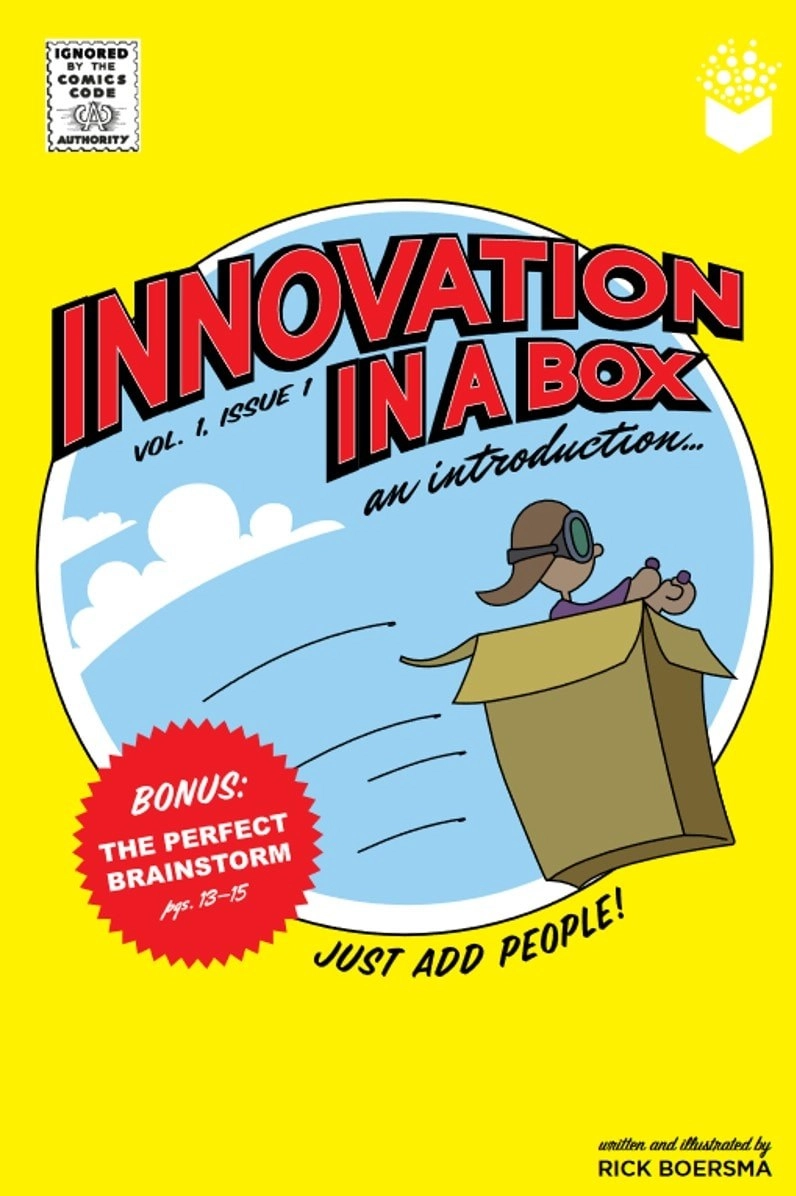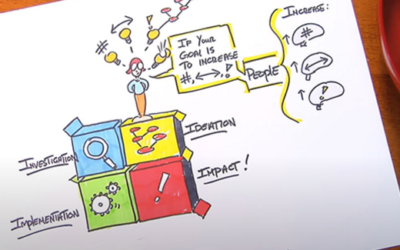
15+ Innovation Tools To Help Any Team Innovate Every Day
Summary
Innovation tools don’t need to be complicated or costly to implement. A structured innovation process with easy-to-use tools can help foster openness to new ideas and build trust in several ways. They provide a systematic, disciplined, and organized approach to the innovation process, which takes the pressure off how the team will come up with ideas and how they will evaluate them effectively. This way, any team can generate value-adding ideas and contribute to the innovation process.
Sections:
- Any team can innovate… with the RIGHT tools
- Innovation tools don’t need to be complicated
- Structured innovation tools: No “brilliant lightbulb idea” required
- Benefits of structured innovation tools
- Creating your innovation dream team
Any Team Can Innovate…With The RIGHT Tools
In today’s ever-changing business environment, the ability to innovate is a business advantage. Whether you stay up-to-date with business trends by reading articles, listening to podcasts, or attending conferences and seminars, the word “innovation” is everywhere. The term can feel daunting – both for organizations, and for employees. What exactly is innovation? And how can we equip our people to innovate?
Creativity and innovation are not the same thing, and leadership requests to “think outside the box” can often be met with an organization-wide groan. There are many barriers to, and misconceptions about, creativity and innovation. Merely asking your teams to think innovatively, creatively, or “outside the box” without equipping them with the right tools and guidance to do so, is a recipe for failure.
Innovation can often be seen as a mysterious and complex process, and we want to reassure you that it doesn’t need to be mysterious. Or complex. In fact, with the right process and tools, any team can innovate. Whether you’re making transformational products, or looking to improve your core processes, services, or internal systems; innovation can take many forms.
It’s also important to note that innovation is a discipline, rather than a flash of brilliance. Discipline is supported by the right mindset, skill sets and tools. In fact, a practical innovation approach – including practical tools – can help everyday teams engage in the discipline of innovation and deliver breakthrough solutions that add value to your business.
Innovation Tools Don’t Need to Be Complicated
When talking about innovation with our clients and community, we often hear concerns about the cost of upskilling teams, or that the innovation training process and associated frameworks will be onerous or overly complicated. Complexity is also a concern for employees. They often don’t feel equipped to innovate or that they have the clarity, time or tools to think beyond the status quo.
We often hear that employees have a negative association with innovation. They picture the “blue sky” meeting where everyone huddles around a flip chart and one person dominates the conversation, while another shoots down ideas, and most sit quietly, afraid to weigh in. Given these common experiences, we can understand why employees may be resistant or lacking confidence when asked to “think outside the box”.
We’re here to tell you that anyone and any team – given the right process and tools – can innovate. You can grow the capabilities needed to innovate within your organization, at all levels and across all departments, and it doesn’t need to be overly complicated or expensive. It’s about introducing teams to the innovation discipline and making it easy for them to incorporate what they’ve learned into their day-to-day work.
Structured Innovation Tools: No “Brilliant Lightbulb Idea” Required
Innovation is not about waiting for, or focusing on, that one right idea. It’s not the one lightbulb moment that a team needs to focus on, it’s the number of ideas they produce – and how they evaluate and test those ideas – that will eventually lead the team to implement a more innovative approach.
This is when individuals tend to clam up: feeling pressured to come up with creative ideas, on the spot, in a room full of their peers. That experience can be incredibly intimidating. To generate a lot of ideas you need openness, and it’s hard to feel open and curious when you feel intimidated; especially if you don’t identify as a creative or innovative person.
This is where structured thinking tools can help. Instead of standing at a flip chart and saying “what ideas do you have?”, structured thinking tools walk the team through a series of questions and activities that break idea generation down into manageable chunks. This creates openness and encourages everyone to participate, which leads to diversity of thought, perspective and contribution. That’s how you drive a high volume of output. Then, with clarity, structure, and tools that they can easily understand and use, any team can effectively generate innovative ideas, and move those ideas from words on a sticky note through to implementation.
It also gets teams excited and comfortable to engage in the innovation process. This drives proactive innovation. Instead of waiting for an issue to surface and having to move beyond the status quo from a reactionary stance, structured thinking tools cultivate an environment in which every employee can identify when it’s the right time to think beyond the status quo or learn more about their customer or user to improve a process, system, or experience.
Innovation Tool Spotlight: the How Might We tool
We regularly ask leaders what their biggest barrier is to driving innovation within their organization and one answer consistently shows up near the top of the list – the need to focus teams on solving the right problem.
The How Might We tool (one of the first Identification stage tools in the toolkit), is a very powerful tool to help teams get aligned. It has people pause to ensure they have identified the right question, that is, the one that’s most relevant to the original problem.
Consider how many times a team thinks they’re working on the right thing only to discover – after spinning their wheels – that they weren’t clear or on the same page. An example of the tool in action might be:
- Problem: “Too many shipping errors resulting in angry customers calling the contact centre”
- How Might We frame: To broaden people’s thinking, we might frame this with “How might we delight our customers?”
- From there, the team works collaboratively to answer two questions: “Why is this important?” and “What’s stopping us?”
The output is then themed and used to refine the main question as needed. It’s a straightforward and powerful tool to confirm alignment around the issue or problem the team is trying to solve, and the barriers to overcome it. A team emerges from this exercise primed for energized ideation
Benefits of Structured Innovation Tools
Structured thinking tools provide a systematic, disciplined, and organized approach to the innovation process, which takes the pressure off how the team will come up with ideas and how they will evaluate them effectively. This frees them up to work their way through the tools as needed, and bring their ideas forward. By leveraging a structured approach, process and tools, any team can generate value-adding ideas and contribute to the innovation process. A structured innovation process with practical tools can help foster openness to new ideas and build trust in several ways:
- Access to a shared language and understanding. With a common set of tools, everyone on the team has a common language and a shared understanding of how the process works. This can help to reduce misunderstandings and quickly builds alignment and trust between team members. It also reduces the amount of time the team needs to think about how they are going to approach innovation, and more time on the problem they’re solving or the opportunity they’re exploring.
- Transparent decision making. With a focus on collaborative prioritization, the decision-making process is more transparent, which builds trust between team members, and in the process itself. Everyone understands the criteria used to evaluate ideas and has a clear understanding of how and why decisions are being made.
- Focus on ideas, rather than people. When everyone is working within the same process and tools, the emphasis is on generating and evaluating ideas, not on who came up with them. This can help create a shared focus on the end goal and a more open and collaborative environment.
- Iterative improvement. the i5 process and tools encourage teams to evaluate and improve upon their ideas and innovations over time. This approach can help build trust between team members and reduce implementation fears, as everyone has the opportunity to provide feedback and contribute to the improvement of ideas over time.
- Risk mitigation. Rather than a big, high-risk launch, experimentation and taking a test-and-learn approach to introducing new things is encouraged.This helps reduce analysis paralysis and the need for complex risk management because everyone understands that ideas are being thoroughly evaluated by users and improved before being implemented. With feedback and continuous improvement built into the process, the risk of implementing new ideas is significantly lower.
Our i5 innovation tools provide guidance and enable everyday teams to approach challenges, issues, and opportunities with an innovative mindset by:
- Asking better questions, and providing guided activities that support free-flowing ideation that enables teams to generate a lot of ideas.
- Helping teams organize and explore their ideas. This includes defining a clear problem statement, breaking it down into smaller components and generating criteria to evaluate their ideas.
- Encouraging teams to consider multiple perspectives and to approach problems from different angles by leveraging design thinking tools that help them generate more customer-centric solutions.
- Using a test-and-learn approach that emphasizes experimentation to help support change and strengthen risk mitigation.

ILLUSTRATED GUIDE
An Introduction to the i5 Process and Innovation Tools
People have a tendency to freely swap the terms problem solving and innovation. But they’re not the same. Problem solving is reactive while Innovation is proactive. And while problem solving is necessary for survival, all it really does is maintain the status quo. True innovation is future-focused and transcends the status quo.
Start your journey with fueling every day innovation with this graphically rich introduction to innovation, the i5 process and the practical tools that will help you and your team deliver breakthrough ideas.
Creating Your Innovation Dream Team
You may still be wondering: is it really possible for everyday teams to generate more ideas? And can they really move a value-adding idea through to implementation?
What if we told you that leveraging your people and equipping them with the right tools could increase creative output by 500% and drive more of the right solutions to implementation? When we talk about leveraging people, we mean creating an innovation dream team. The more people – and the more diversity of skill, perspectives and experience – the greater the number, range and originality of ideas.
In an ideal world, a team would be fully balanced: you’d have the logical analysts who are great at investigation; the big picture thinkers who are excited by, and good at, generating lots of ideas; the people and customer-focused individuals who can assess the impact of the team solutions; and, of course, you’d have implementers, the ones who plan, organize and get the idea into the world.
This all sounds great but for one problem: what if your team, as great as they are, isn’t a dream team? What if they’re all implementers? Or all ideators? Or as is often the case, what if you don’t even have a team but are left to innovate on your own?
This is why the i5 innovation process and structured thinking tools are so powerful: they make a dream team out of any team or anyone! Think of the tools as filling in for the brain styles that may be missing. With the right mental scaffolding or tools, anyone can strengthen their ideation, analytical, big picture or implementation skills. We invite you to learn more about these tools and how you can turn your everyday teams into everyday innovators.
How Any Team Can Create 500% More Useful Ideas
It’s not enough to say “Think outside the box!”. If we expect people to think outside of their boxes, we need to provide them with a new box (or boxes) that provides the support they need to effectively engage with innovation. That’s where the structured i5 process and tools comes in. Watch the video and explore how Innovation in a Box can help you fuel every day innovation within your organization.
Ready to Change How Your Organization Innovates?
Equip your teams to be everyday innovators and introduce them to an easy-to-use structured approach, powered by a practical process and tools. You can help your team members feel comfortable, confident, and motivated to be more innovative every day.
Your content is only one click away.
Thanks for your interest in our content. We hope you find value in the time you invest with it. Click the button below and get immediate access to this truly valuable content.
Complete the form below and get instant access to this game-changing content.
Rest assured, we take your privacy seriously and will never sell, trade, or share your information with a third party.




